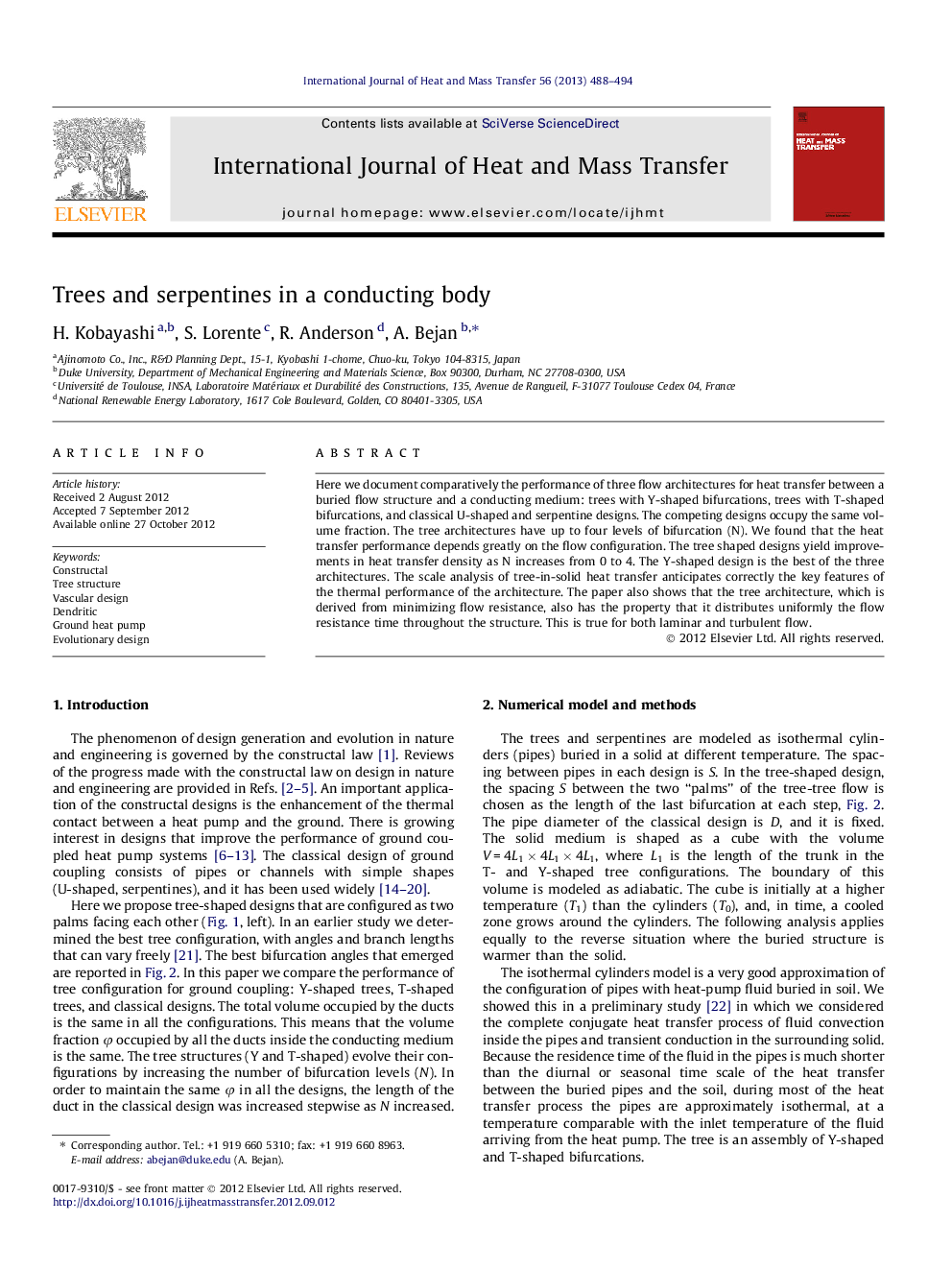| Article ID | Journal | Published Year | Pages | File Type |
|---|---|---|---|---|
| 658804 | International Journal of Heat and Mass Transfer | 2013 | 7 Pages |
Here we document comparatively the performance of three flow architectures for heat transfer between a buried flow structure and a conducting medium: trees with Y-shaped bifurcations, trees with T-shaped bifurcations, and classical U-shaped and serpentine designs. The competing designs occupy the same volume fraction. The tree architectures have up to four levels of bifurcation (N). We found that the heat transfer performance depends greatly on the flow configuration. The tree shaped designs yield improvements in heat transfer density as N increases from 0 to 4. The Y-shaped design is the best of the three architectures. The scale analysis of tree-in-solid heat transfer anticipates correctly the key features of the thermal performance of the architecture. The paper also shows that the tree architecture, which is derived from minimizing flow resistance, also has the property that it distributes uniformly the flow resistance time throughout the structure. This is true for both laminar and turbulent flow.
